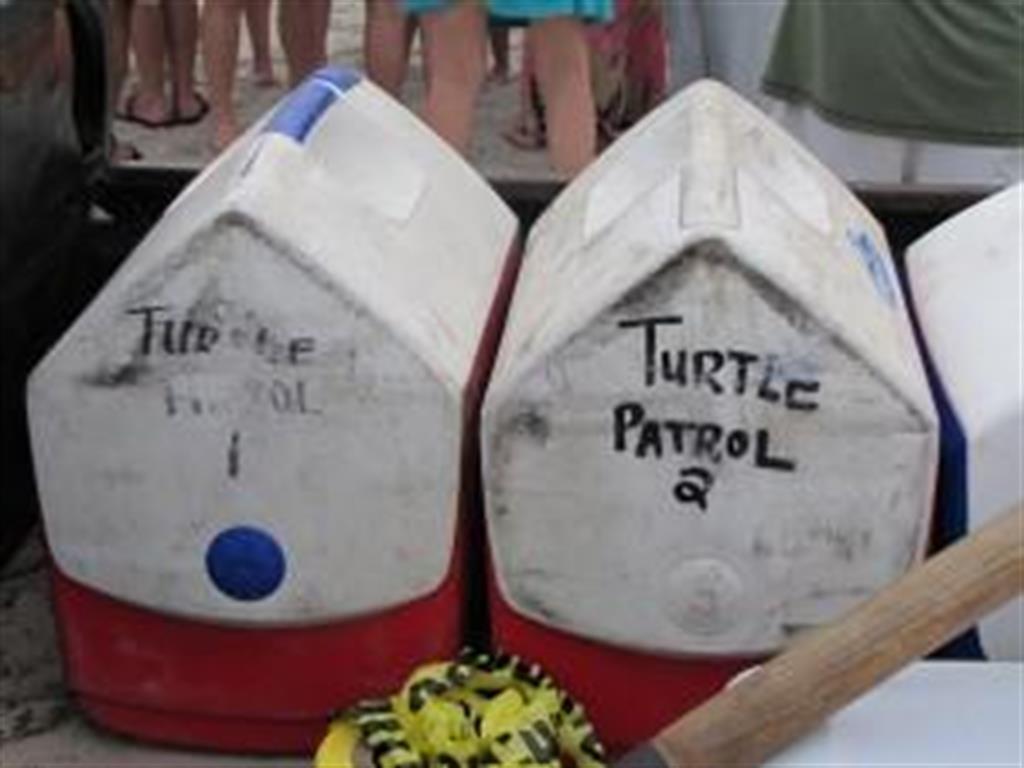Releasing Rescued Turtles into the Sea

A few years ago I had the good fortune of seeing a giant Loggerhead sea turtle lay her clutch of eggs in the dunes on East Beach. Everyone was quiet and all we could hear was her breath, the gentle plop of eggs in the hole she’d dug and her flippers beating the sand tight around them. She turned and crept back into the ocean, leaving her nest under the watchful eye of the Bald Head Island Conservancy (BHIC).
In the years since, I’ve been to several nests that were on target to “boil” – the eggs hatching and turtles crawling around cause the sand to oscillate like it’s boiling – but I’ve never been fortunate enough to see one or to watch the newborn turtles struggle into the surf and into their lives. Until now.
With the threat that Hurricane Irene could come close to the shores of Bald Head Island, the Sea Turtle Interns at the BHIC excavated 14 nests, releasing any hatchlings mature enough to go out on their own and keeping the rest safe and sound (and warm) until they could be released. On Monday, August 29, more than 80 green and loggerhead turtles were released in front of a crowd of nearly 100 onlookers.
BHIC Sea Turtle Interns and Staff, along with a half-dozen volunteers, packed coolers and trays filled with the baby hatchlings to the edge of the surf and released the turtles onto the beach where they crawled and swam, making their way into the ocean.
The turtles are as tiny as their mothers are large. Adults can grow to the size of an adult human, and the hatchlings will fit in the palm of your hand. In their first year or two of life they’ll grow a lot, but only to the size of a dinner plate. They gain the rest of their size over the next two decades, until they’re impressively huge.
Getting to see the completion of the sea turtle birth cycle was exciting for me, and for the rest of the crowd, and we all cheered when the first turtles made their way into the water. The turtles will swim nonstop until they reach the Gulf Stream, around 40 miles offshore. From there they’ll travel up and down the east coast, into the Caribbean and Gulf of Mexico until they reach sexual maturity in 25 years or so, then they’ll return to their birth beach to breed and lay their own clutch of eggs and start the whole thing over.
Published on Wednesday, August 31, 2011